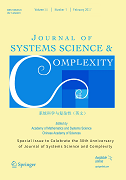ELDESOUKEY Asmaa, MIANGOLARRA Olga Movilla, GEORGIOU Tryphon T.
Evanescent random walks are instances of stochastic processes that terminate at a specific rate. They have proved relevant in modeling diverse behaviors of complex systems from protein degradation in gene networks (Ali and Brewster (2022), Ghusinga, et al. (2017), and Ham, et al. (2024)) and "nonprocessive" motor proteins (Kolomeisky and Fisher (2007)) to decay of diffusive radioactive matter (Zoia (2008)). The present work aims to extend a well-established estimation and control problem, the so-called Schrödinger's bridge problem, to evanescent diffusion processes. Specifically, the authors seek the most likely law on the path space that restores consistency with two marginal densities—One is the initial probability density of the flow, and the other is a density of killed particles. The Schrödinger's bridge problem can be interpreted as an estimation problem but also as a control problem to steer the stochastic particles so as to match specified marginals. The focus of previous work in Eldesoukey, et al. (2024) has been to tackle Schrödinger's problem involving a constraint on the spatio-temporal density of killed particles, which the authors revisit here. The authors then expand on two related problems that instead separately constrain the temporal and the spatial marginal densities of killed particles. The authors derive corresponding Schrödinger systems that contain coupled partial differential equations that solve such problems. The authors also discuss Fortet-Sinkhorn-like algorithms that can be used to construct the sought bridges numerically.
